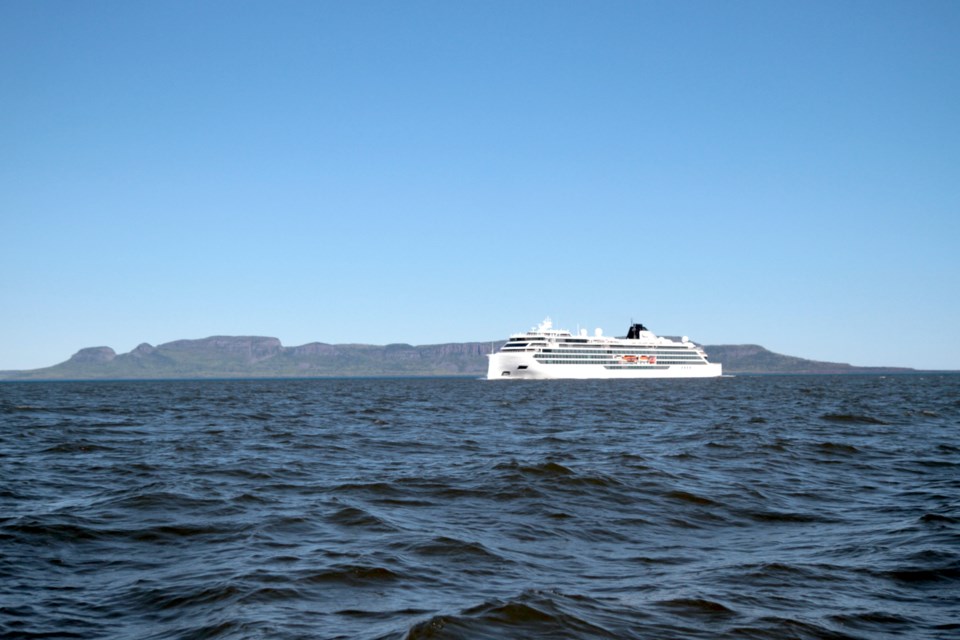THUNDER BAY — Thunder Bay’s tourism agency says the local industry’s recovery from COVID-19 is in full swing, reporting hotel occupancy rates surpassed pre-pandemic levels in 2022.
While emphasizing some in the industry continue to struggle, Tourism Thunder Bay manager Paul Pepe outlined what he called a “remarkable recovery” during an annual report to city council on Feb. 13.
“There’s a lot to celebrate in terms of how our industry performed and the resiliency it demonstrated over the last three years,” he said.
Several key tourism statistics have rebounded more quickly than expected, noted the agency, a branch of the Thunder Bay CEDC.
Leading the charge was the accommodation sector, with local occupancy rates rising above 73 per cent. That marks an increase of nearly 15 points from 2021, and is just slightly above 2019 figures. Pepe said it’s also among the highest in the country.
The average daily rate for stays in the city jumped to $158 last year, up by over 20 per cent from 2021.
Tony Scarcello, general manager of the Prince Arthur Hotel, said the encouraging figures in the report square with his experience on the ground.
Traffic dipped in the summer of 2021, and the hotel is still seeing fewer American visitors, but he described a healthy market buoyed by increased domestic travel.
"We are seeing higher occupancy compared to just before the pandemic," he said.
Food and beverage operations are rebounding more slowly, however, he noted.
Pepe pointed to the return of cruise shipping as another bright spot, with the city seeing three overnight turnarounds by the 378-passenger Viking Octantis and two day visits from the Ocean Navigator.
He sees signs that boom is set to continue.
“We are anticipating our best year on record for cruise ships” in 2023, he said, with four ships expected to make 15 port calls.
Questioned by Coun. Rajni Agarwal, Pepe conceded none of those will be overnight turnaround stays, with passengers embarking and disembarking in Thunder Bay but said the increased traffic will still pay dividends.
“A turnaround does bring an amplified economic impact in a lot of ways — from hotels, from air transportation,” he said.
“But the day stops are in port for about 12 hours, so a lot of the guests will go to the Fort William Historical Park, Kakabeka Falls, Ouimet Canyon, the Thunder Bay Art Gallery, the Thunder Bay Museum.”
The CEDC estimates cruise ship visits created a local economic impact of over $6 million last year.
Those numbers are generated using tools like the Tourism Regional Economic Impact Model, Pepe told council, noting the approach is endorsed by Ontario’s Ministry of Tourism.
Of nearly 390,000 estimated visitors to the city last year, the report says 87 per cent were from Canada, with 13 per cent from the U.S. and other countries.
Americans have typically made up about a third of visitors to the city, with the ongoing shortfall one example of continuing challenges for parts of the sector like hunting and fishing lodges.
“As much as there’s a lot to celebrate, we also want to remind folks that 70 per cent of tourism businesses took on COVID-related debt over the last three years,” said Pepe. “So even though these increases in rates are encouraging, a lot of those dollars are driven to pay debt.”
Of Canadian visitors to the city, 65 per cent originated within Ontario, while Quebec, Manitoba, Alberta, and B.C. each accounted for around seven per cent.
Roughly 53 per cent of visitors were passing through, while 17 per cent stayed at a hotel, and 13 per cent at a campsite.
Over 80 per cent of visitors arrived by car, 10 per cent by RV, and three per cent by air, the report stated.
Pepe also highlighted the CEDC’s own tourism promotion work, reporting the agency handed out $1.5 million to 37 projects through its Tourism Development Fund, which draws revenue from the Municipal Accommodation Tax (MAT) surcharge on local hotel stays.
Funded projects including Magnus Theatre’s Next Stage, marina enhancements at Silver Islet, the Country on the Bay music festival, and the Splish Splash Water Park.
Pepe called the fund “the most powerful tool we have” to promote local tourism.
— TBnewswatch




